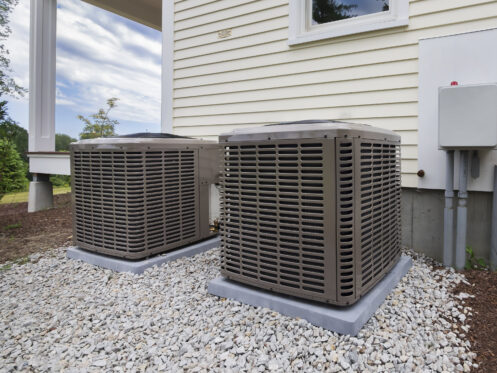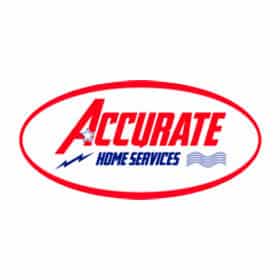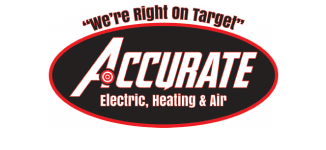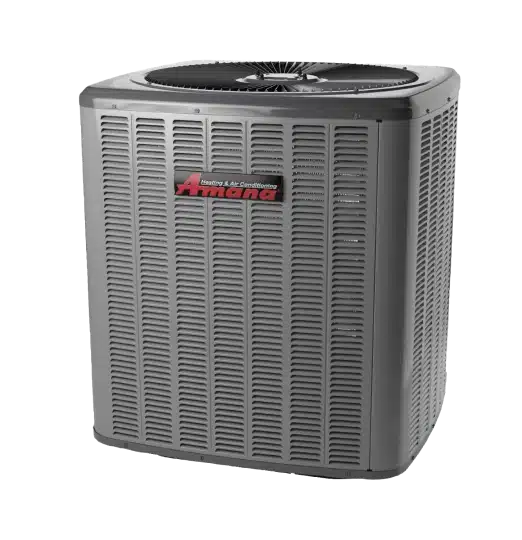Homeowners who want to get the most out of their HVAC systems need to know the differences between an air handler and a furnace. Both pieces of equipment are very important for heating and cooling, but they do different things and are best used in different situations. The main job of an air handler is to move and control airflow in air conditioning and heat pump systems. On the other hand, a furnace’s only job is to make and distribute heat. At Accurate Home Services in Kaufman, TX, we enjoy helping our customers understand what their home needs and how to choose between important appliances. Read on to learn more about air handlers and furnaces and which option might be best for your home.
Air Handlers: Definition and Function
Air handlers, also called air handling units (AHUs), are very important parts of HVAC systems. They move and control the air inside buildings. They are usually combined with heat pumps and air conditioners. The main job of an air handler is to make sure that the conditioned air is spread properly throughout a specific room or, via ductwork, throughout a building’s various room. Some of its main parts include a blower motor that moves air through the ducts and an evaporator coil that cools the air in an air conditioning system.
Air handlers also have filters that get rid of dust, pollen, and other particles to make the air inside better. They are very important for keeping the inside of a building comfortable by making sure that air flows, is filtered, and is conditioned properly. For HVAC systems to work well and reliably, air handlers must be installed correctly and serviced regularly.
Furnance: Definition and Function
A furnace is one of the most important parts of many home and business HVAC systems because it makes and distributes heat. Different types of fuel, like natural gas, propane, oil, or electricity, can be used to power furnaces. Basically, a furnace’s main job is to heat air, which is then moved around the house by a system of ducts. Some important parts are the burner, which burns fuel to make heat, and the heat exchanger, which moves the heat from the fuel to the air. The blower motor moves the hot air through the ducts.
Modern furnaces are made to use less energy. They often have high-efficiency ratings and advanced controls to make sure they work at their best. They heat consistently and dependably, which makes them perfect for places that get cold. Furnaces and air conditioners can also be put together to make a complete HVAC system that does both heating and cooling. Furnaces must be installed correctly and serviced regularly to make sure they work safely, use little energy, and last a long time.
Key Components of Air Handlers
Air handlers are made up of several important parts that work together to keep a building’s air moving and comfortable. The motor that moves the air through the ducts is in the middle. In air conditioning systems, the condenser coil cools the air. Filters get rid of dust and other particles in the air, making it cleaner. Other parts, like dampers and controls, control the flow of air and the temperature, making sure that the conditioned air is spread evenly throughout the area. For the best function, these parts must be properly maintained.
Key Components of Furnace Systems
There are several important parts that make up furnace systems and ensure they heat properly. The burner lights the fuel, which makes heat. The heat exchanger then moves the heat to the air. This heated air is moved through the ducts by the blower motor to warm the rooms. The flue or air pipe safely sends the gases from the fire outside. The furnace’s operation is also controlled by control boards and thermostats, which ensure even and effective warmth. Of course, for proper function, these parts must be conscientiously maintained.
Energy Efficiency: Air Handlers vs. Furnaces
The blower motor is a big part of how energy-efficient an air handler is. Variable-speed types are more energy-efficient because they change the flow of air based on demand. The Annual Fuel Utilization Efficiency (AFUE) number shows how efficient a furnace is. New, high-efficiency models turn more than 90% of the fuel they use into heat.
Applications: When to Use an Air Handler vs. a Furnace
In many HVAC systems, a furnace is installed in conjunction with a central air conditioning unit. The AC relies on an air handler to distribute cool air, and the furnace supplies warm air on its own. Each has a fan and a filter. In areas with a moderate climate, heat pumps have become quite popular. This is because a heat pump can supply both warm and cool air, and it uses an air handler to do it. It’s a very energy-efficient device with many advantages. A furnace, however, is a specialized heating unit that excels in colder climates where strong warmth is needed. A decision on which setup is most appropriate for your home is best made with the assistance of an HVAC professional.
Installation: Air Handlers vs. Furnaces
When you install an air handler, it’s crucial to ensure it’s compatible with the heat pump or air conditioner you propose using. The right placement and size are also key for a smooth process. For a central AC system, the air handler will need to be connected to ductwork for air distribution. There is an alternative configuration. In a mini-split system, a single outdoor compressor and condenser is connected to multiple air handlers, one in each room. This not only allows for zoning, but it also makes ductwork unnecessary. Installing that type of system is relatively easy, but in all these scenarios, professional assistance is required. Dealing with electrical and gas connections, not to mention complex machinery, demands training and expertise. Qualified installers are also necessary to keep the warranty valid.
Maintenance Tips: Air Handlers vs. Furnaces
Both air conditioners and furnaces need to be serviced regularly to make sure they work well and last as long as possible. For air handlers, this means changing the air filters often, cleaning the evaporator coil, and checking the blower parts to make sure they work right. It is important to clean or replace the air screens in furnaces, looks for signs of damage or wear on the burner and heat exchanger, and make sure there is enough air flow. Professional HVAC work should be done once a year to keep things running at their best, avoid problems that could cost a lot to fix, and keep energy costs low.
Rely on Local Experts
To make smart choices about your home’s HVAC system, you need to know the main differences in various HVAC setups. While an air handler isn’t a direct heat source, a furnace is. If an air handler provides heat, it just distributes warmth produced by a separate device. That device is a heat pump. One of these is very efficient in a mild winter, but if the weather is bitterly cold, a furnace will handle the harsh conditions better.
Homeowners in the vicinity of Kaufman can count on our technicians at Accurate Home Services for pertinent information and sound advice. After all, we’ve been taking care of their comfort for more than three decades. We handle a complete range of heating, cooling, indoor air quality, and electrical services, including installation, maintenance, and repair. If you’d like to further discuss which of these systems makes the most sense for your home, call us today.




